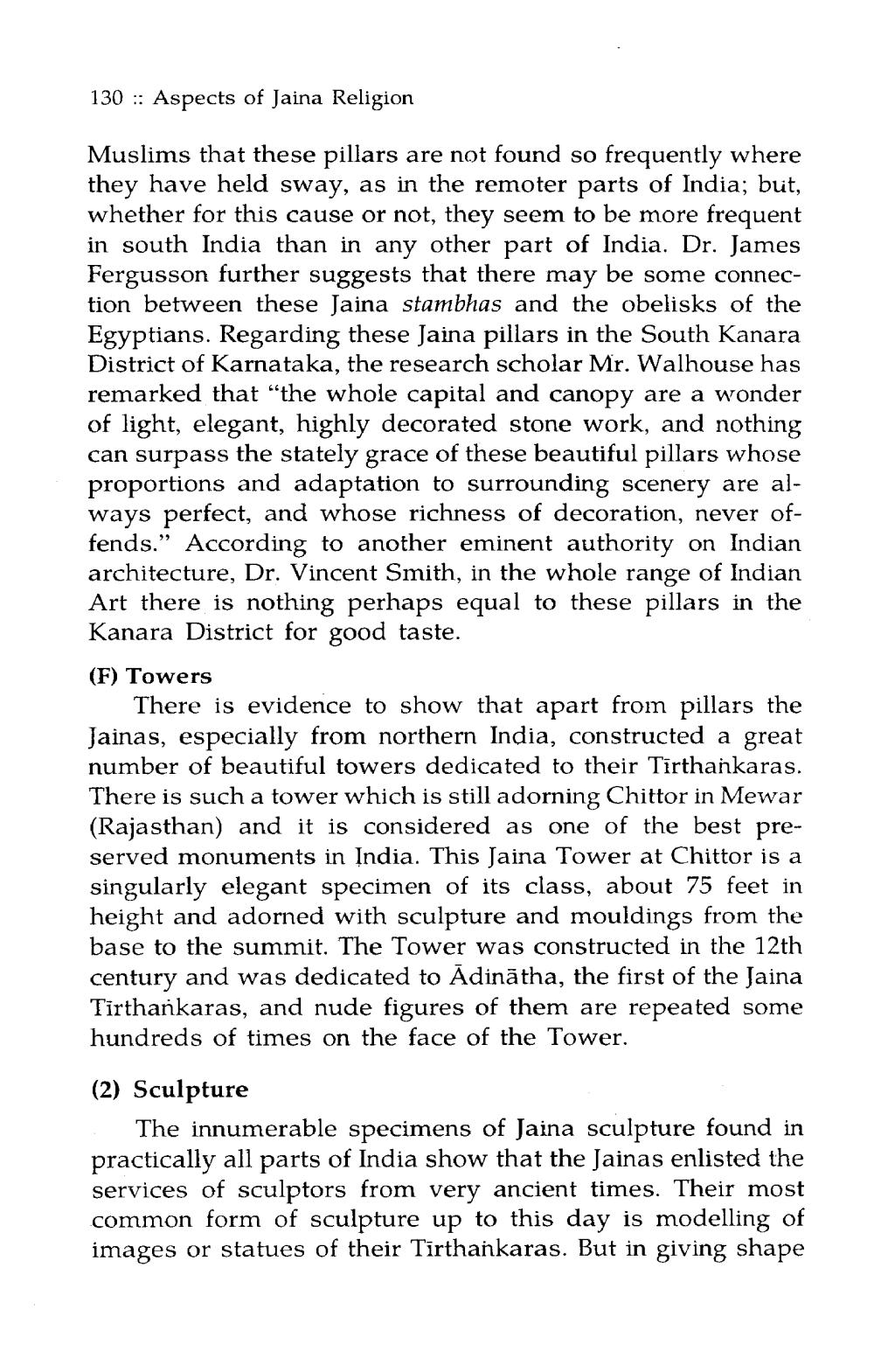________________
130 :: Aspects of Jaina Religion
Muslims that these pillars are not found so frequently where they have held sway, as in the remoter parts of India; but, whether for this cause or not, they seem to be more frequent in south India than in any other part of India. Dr. James Fergusson further suggests that there may be some connection between these Jaina stambhas and the obelisks of the Egyptians. Regarding these Jaina pillars in the South Kanara District of Karnataka, the research scholar Mr. Walhouse has remarked that "the whole capital and canopy are a wonder of light, elegant, highly decorated stone work, and nothing can surpass the stately grace of these beautiful pillars whose proportions and adaptation to surrounding scenery are always perfect, and whose richness of decoration, never offends." According to another eminent authority on Indian architecture, Dr. Vincent Smith, in the whole range of Indian Art there is nothing perhaps equal to these pillars in the Kanara District for good taste. (F) Towers
There is evidence to show that apart from pillars the Jainas, especially from northern India, constructed a great number of beautiful towers dedicated to their Tirthankaras. There is such a tower which is still adorning Chittor in Mewar (Rajasthan) and it is considered as one of the best preserved monuments in India. This Jaina Tower at Chittor is a singularly elegant specimen of its class, about 75 feet in height and adorned with sculpture and mouldings from the base to the summit. The Tower was constructed in the 12th century and was dedicated to Ādinātha, the first of the Jaina Tirthankaras, and nude figures of them are repeated some hundreds of times on the face of the Tower.
(2) Sculpture
The innumerable specimens of Jaina sculpture found in practically all parts of India show that the Jainas enlisted the services of sculptors from very ancient times. Their most common form of sculpture up to this day is modelling of images or statues of their Tīrthankaras. But in giving shape




